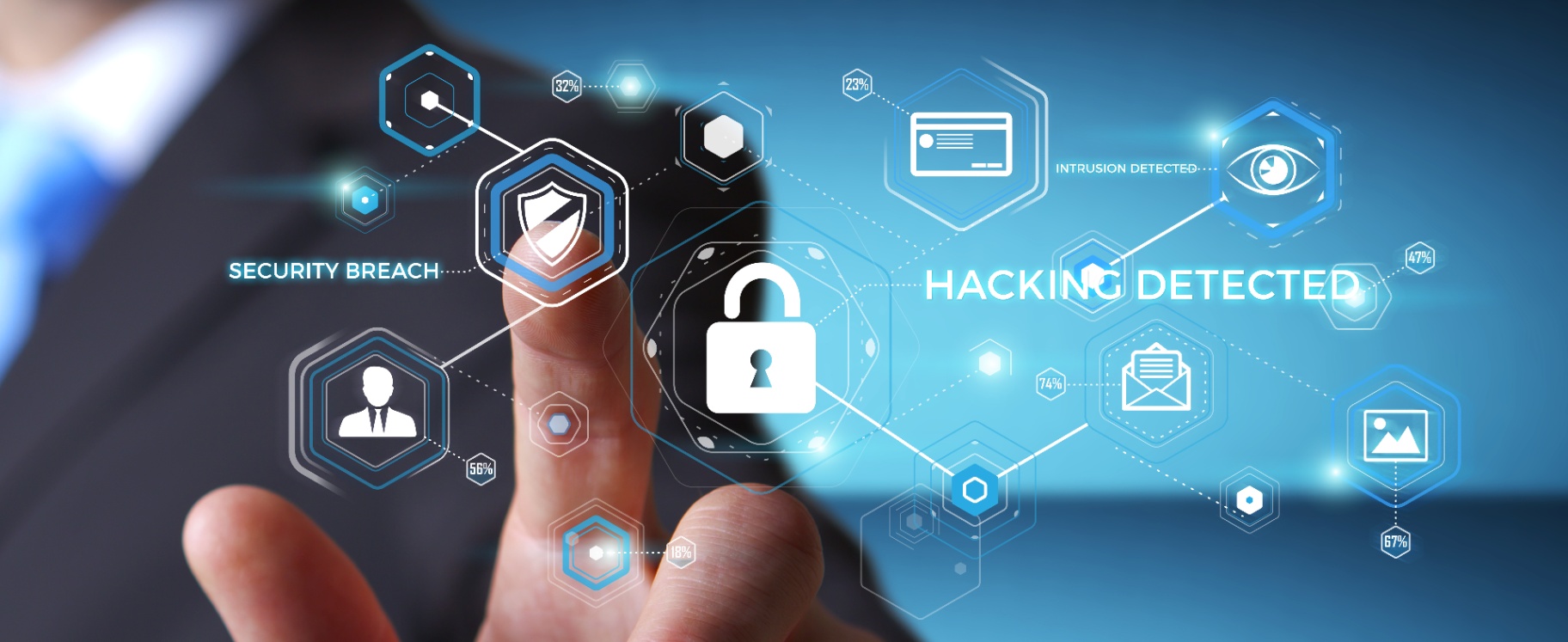The cybersecurity landscape has fundamentally shifted. What used to be crude, scatter-shot ransomware attacks have evolved into sophisticated, AI-powered operations that specifically hunt down small and medium-sized businesses (SMBs) with laser precision. If you think your business is too small to be noticed, think again: you're exactly who these cybercriminals are targeting.
The numbers are staggering: ransomware attacks have increased by almost 300%, with over 50% specifically targeting small businesses. Even more alarming? According to the 2025 Verizon Data Breach Investigations Report, a whopping 88% of SMB security breaches now involve ransomware, compared to just 39% for larger enterprises. This isn't coincidence: it's strategy.

Why AI-Powered Criminals Love SMBs
You're the Perfect Target
Here's the uncomfortable truth: cybercriminals have done the math, and SMBs represent the perfect balance of valuable assets and weak defenses. More than 60% of small businesses lack skilled cybersecurity staff in-house, creating security gaps that AI-powered reconnaissance tools can identify and exploit within minutes, not months.
But it's not just about weak defenses. Threat actors have discovered they can extract more consistent profits from SMBs by setting "reasonable" ransom amounts: typically between $10,000 and $100,000: rather than the million-dollar demands they make against Fortune 500 companies. The psychology is brilliant: these amounts are devastating enough to get immediate attention but small enough that businesses can realistically consider paying.
The Supply Chain Multiplier Effect
SMBs aren't just end targets anymore: they're stepping stones. Cybercriminals use compromised small businesses as entry points to attack larger organizations through supply chain relationships. This dual-purpose targeting makes your business twice as valuable to attackers, significantly increasing your risk profile.
How AI Transforms Ransomware Into a Precision Weapon
Super-Charged Social Engineering
Traditional phishing emails were often laughably obvious: poor grammar, generic greetings, suspicious attachments. AI has changed everything. Modern ransomware campaigns use machine learning to craft highly personalized emails that can impersonate your CEO, your biggest client, or your IT provider with frightening accuracy.
These AI systems analyze public information about your company, social media profiles, and even previous data breaches to create messages that pass the eye test. They adapt in real-time based on your responses, making each interaction more convincing than the last.
Automated Vulnerability Hunting
AI doesn't get tired, doesn't take breaks, and doesn't miss details. Cybercriminals now deploy AI systems that continuously scan and analyze SMB networks, processing vast amounts of data from network traffic, system logs, and other sources to detect patterns and vulnerabilities that human attackers might miss.
These systems can identify everything from unpatched software and weak passwords to misconfigured firewalls and unsecured remote access points. Once they find a weakness, they automatically prioritize targets based on potential payoffs and likelihood of success.

The 5-Step VLAN Monitoring Defense Strategy
Network segmentation through Virtual Local Area Networks (VLANs) combined with continuous monitoring represents your best defense against AI-enhanced ransomware. Here's how to implement a bulletproof strategy:
Step 1: Create Strategic Network Zones
Start by dividing your network into distinct security zones using VLANs:
- Critical Business Zone: Your core servers, databases, and mission-critical applications
- User Work Zone: Employee workstations and standard business applications
- Guest/Public Zone: Visitor access and any public-facing systems
- IoT/Device Zone: Printers, security cameras, and other connected devices
- Management Zone: Network infrastructure and administrative tools
Each zone should operate as an isolated network segment, preventing lateral movement if one area becomes compromised. This segmentation ensures that even if ransomware infiltrates your guest network, it can't automatically spread to your accounting systems or customer database.
Step 2: Implement Intelligent Traffic Monitoring
Deploy AI-powered monitoring tools that continuously analyze traffic between VLAN segments. These systems should:
- Baseline Normal Behavior: Learn typical communication patterns between network zones
- Detect Anomalies: Flag unusual data transfers, unexpected connections, or suspicious protocol usage
- Real-Time Alerting: Immediately notify administrators when potential ransomware activity is detected
- Automated Response: Automatically isolate suspicious network segments when threats are identified
Modern network monitoring solutions can identify ransomware behavior patterns like mass file encryption attempts, unusual network scanning, or command-and-control communications.
Step 3: Enforce Zero-Trust Access Controls
Implement strict access controls between VLAN segments using next-generation firewalls:
- Default Deny: Block all inter-VLAN communication by default
- Explicit Allow Rules: Only permit specific, necessary communication between zones
- User Authentication: Require multi-factor authentication for accessing critical network zones
- Device Verification: Ensure only authorized devices can join each network segment
This approach follows the principle of least privilege: users and devices get only the minimum access required for their specific roles, nothing more.
Step 4: Deploy Continuous Vulnerability Scanning
Regular vulnerability scanning across all VLAN segments helps identify potential entry points before attackers find them:
- Automated Daily Scans: Check for new vulnerabilities, misconfigurations, and security weaknesses
- Risk Prioritization: Focus remediation efforts on the highest-risk vulnerabilities first
- Compliance Monitoring: Ensure all network segments meet security standards and requirements
- Patch Management Integration: Automatically coordinate with patch management systems to address discovered vulnerabilities
AI-enhanced vulnerability scanners can correlate findings across different network segments, identifying attack paths that might not be obvious when looking at individual systems in isolation.
Step 5: Establish Incident Response Automation
Create automated incident response workflows that activate when ransomware indicators are detected:
- Automatic Isolation: Immediately quarantine affected network segments
- Communication Blocking: Cut external communications from compromised zones
- Backup Verification: Automatically verify backup integrity and availability
- Stakeholder Notifications: Alert key personnel and external partners about potential incidents
- Evidence Preservation: Capture network logs and forensic data for investigation

Making It Work: Implementation Realities
Start Small, Scale Smart
You don't need to implement everything at once. Begin with basic network segmentation between your most critical systems and general user networks. As you gain experience and see the benefits, gradually add more sophisticated monitoring and automation capabilities.
Budget Considerations
Many SMBs assume enterprise-grade network security is beyond their budget, but modern solutions are more accessible than ever. Cloud-based monitoring services, managed security solutions, and subscription-based tools can provide enterprise-level protection at SMB-friendly price points.
Skills Gap Solutions
Don't let the lack of in-house expertise stop you. Managed IT service providers can implement and maintain these security measures while training your team on basic monitoring and response procedures. This approach gives you immediate protection while building internal capabilities over time.
The Bottom Line
AI-driven ransomware isn't a future threat: it's attacking businesses right now with unprecedented sophistication and success rates. The traditional "it won't happen to us" mentality is not just naive; it's dangerous.
However, the same AI technology that empowers cybercriminals can also strengthen your defenses. By implementing strategic VLAN monitoring and automated response systems, even small businesses can create robust security architectures that can detect, contain, and neutralize advanced threats.
The question isn't whether your business will face a ransomware attack: it's whether you'll be ready when it happens. Start building your VLAN-based defense strategy today, because tomorrow might be too late.

Ready to protect your business from AI-enhanced ransomware? Contact FoxPowerIT to discuss implementing a comprehensive network monitoring and segmentation strategy tailored to your business needs.

